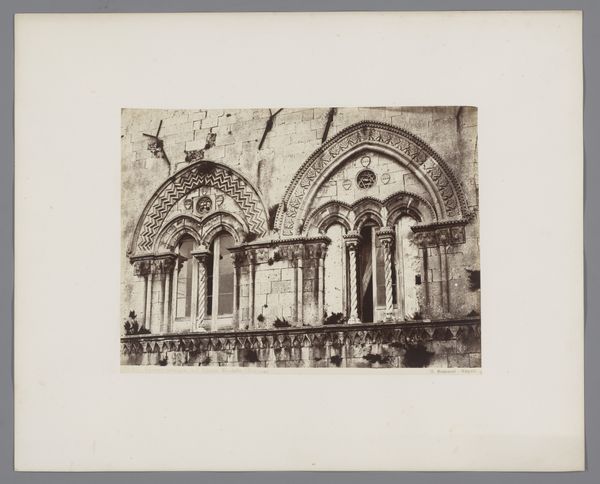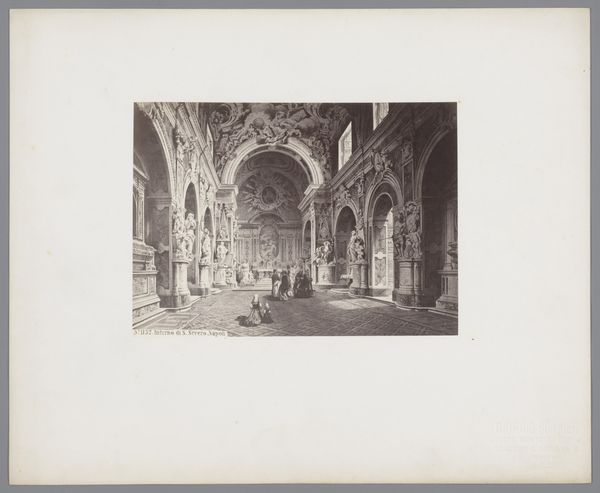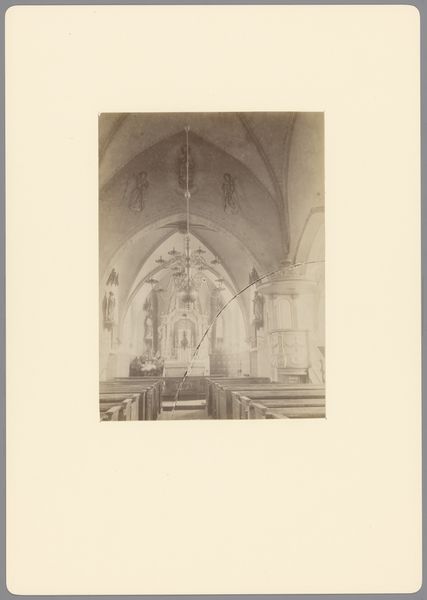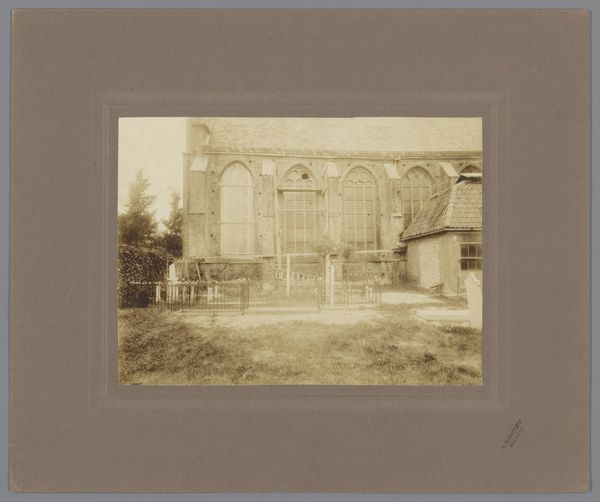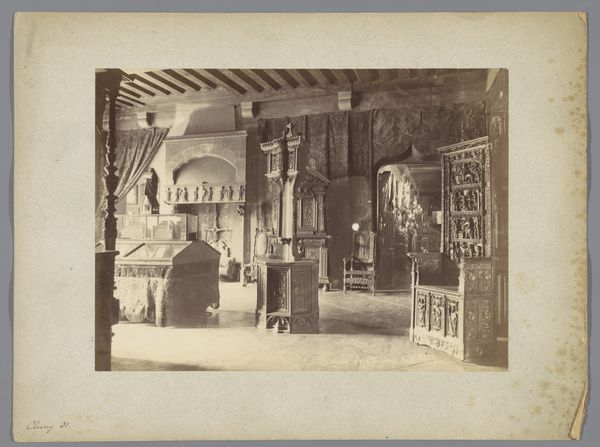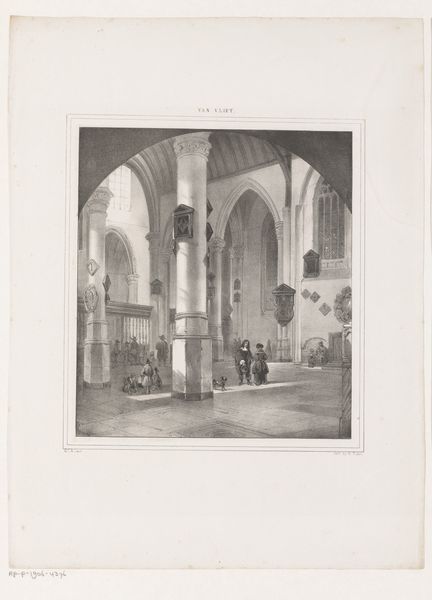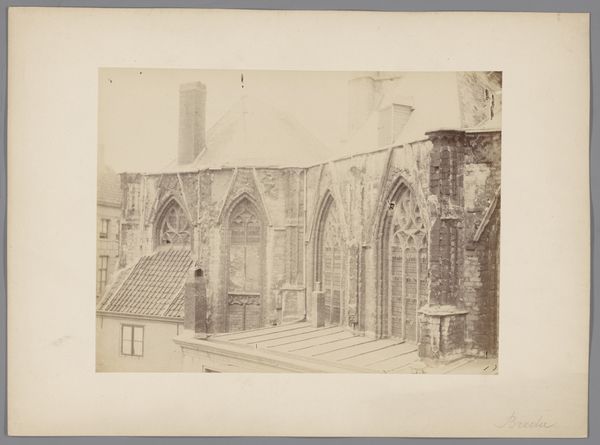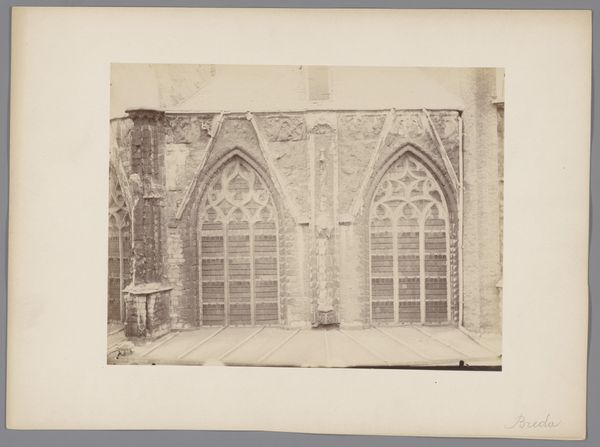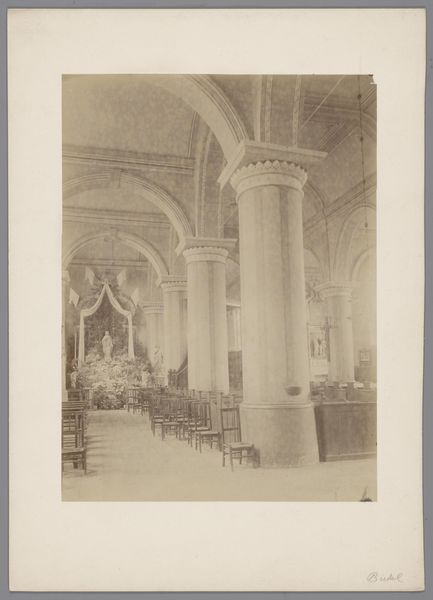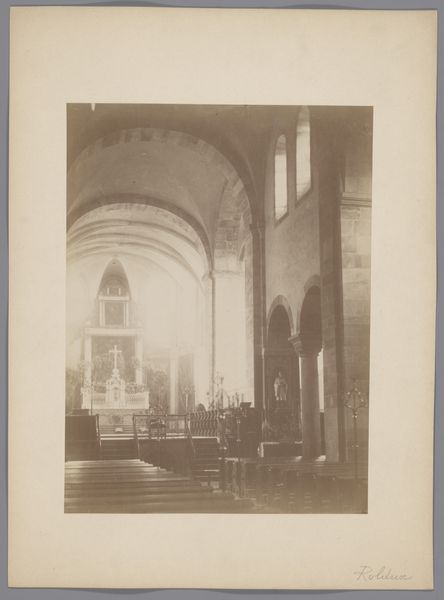
print, photography
# print
#
landscape
#
photography
#
romanesque
#
cityscape
#
history-painting
Dimensions: height 97 mm, width 140 mm, height 168 mm, width 224 mm
Copyright: Rijks Museum: Open Domain
Editor: Here we have a photograph by Fratelli Alinari, taken sometime between 1857 and 1900, of the Capuchin Crypt in Rome. Looking at the sepia tones and the almost overwhelming ornamentation, it’s surprisingly serene despite being, well, constructed from bones! What stands out to you when you view it? Curator: This photograph arrests me with the paradox of memento mori and the celebration of life through enduring symbols. Note how the bones are arranged not randomly, but into architectural forms, floral patterns. It reflects a very specific cultural memory, doesn’t it? What feelings does it stir in you? Editor: It's a little unsettling, yet also beautiful, as if life and death are interwoven, inseparable even. Are these patterns common in similar locations? Curator: Indeed. The Capuchins use bone not just for decoration, but as didactic tools. A skull isn't simply a skull; it symbolizes the transience of earthly life. By visually encoding these lessons, they become part of a shared symbolic language – a constant reminder within the community. Does this impact how you see the work? Editor: Yes, that definitely shifts my understanding. It's not just morbid; it's a purposeful arrangement of symbols, prompting reflection. A memory aid carved in bone. Curator: Precisely. Consider how this contrasts with modern anxieties around death, and our tendency to sanitize or hide away remains. It begs us to question our own relationship to mortality, wouldn't you agree? Editor: I hadn't thought of that. The crypt becomes less a display of death and more of a mirror reflecting our own attitudes towards it. Thanks, that’s a richer way of seeing it. Curator: And for me, seeing your perspective reminds me that this is not a static cultural relic. Meanings evolve with the viewer. We both walk away having new thoughts on it, and that enlivens this place and image all the more.
Comments
No comments
Be the first to comment and join the conversation on the ultimate creative platform.
